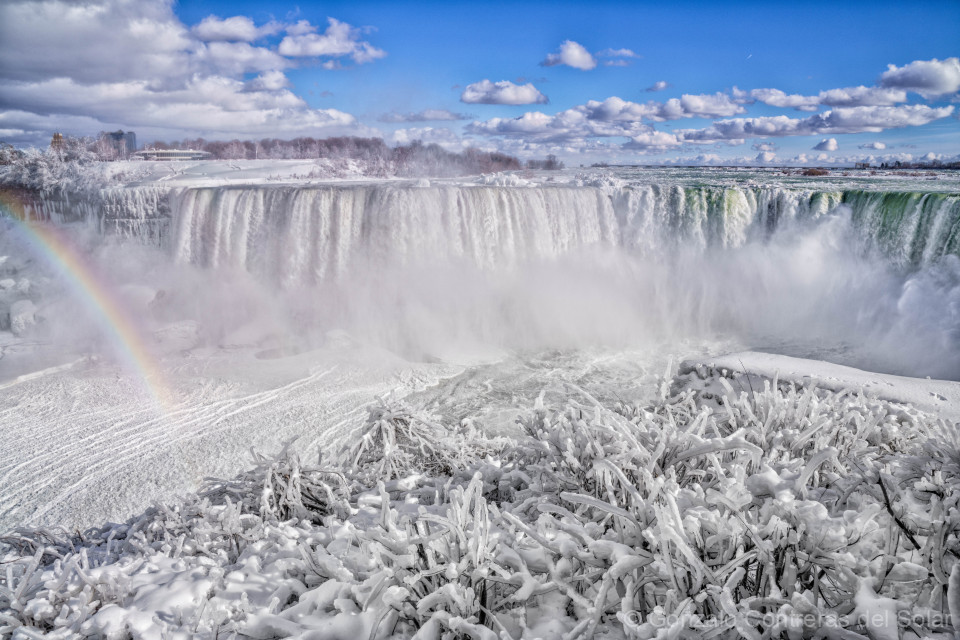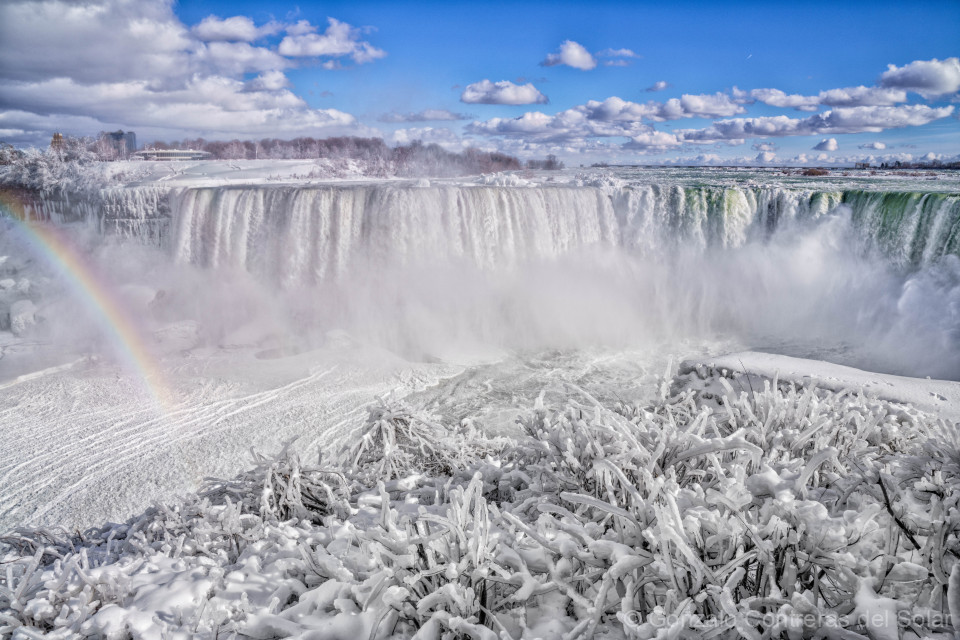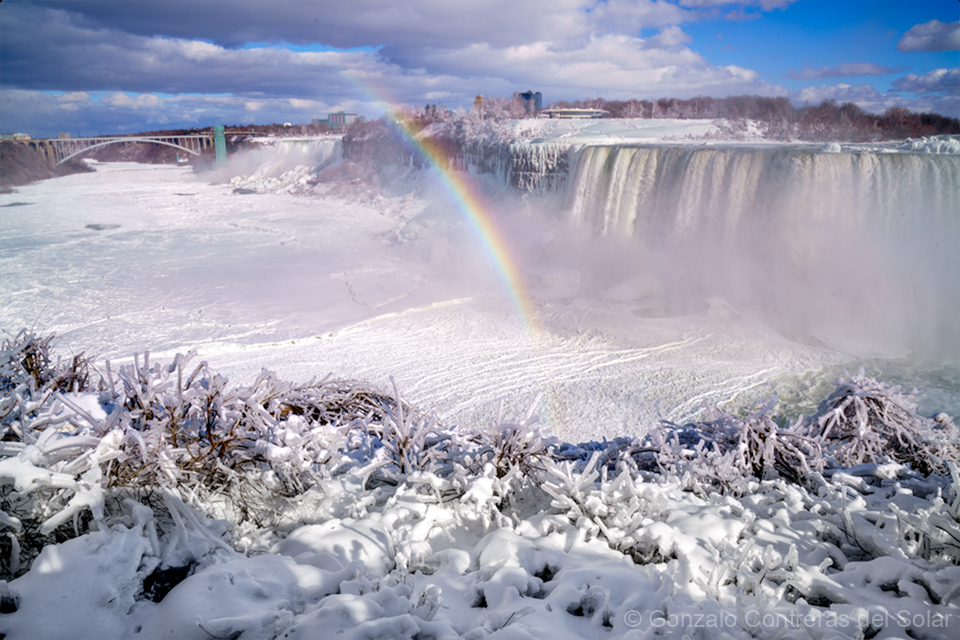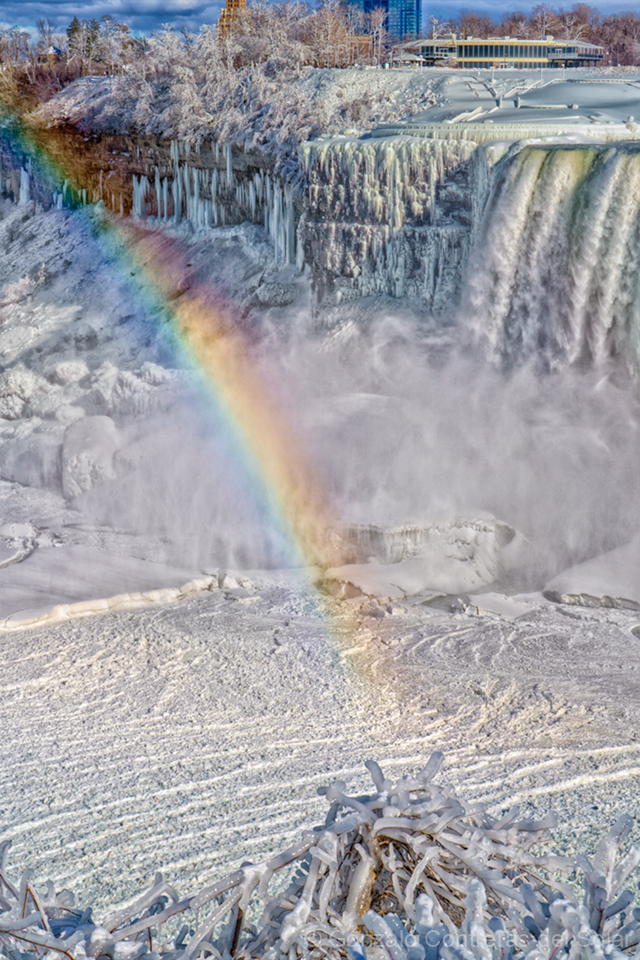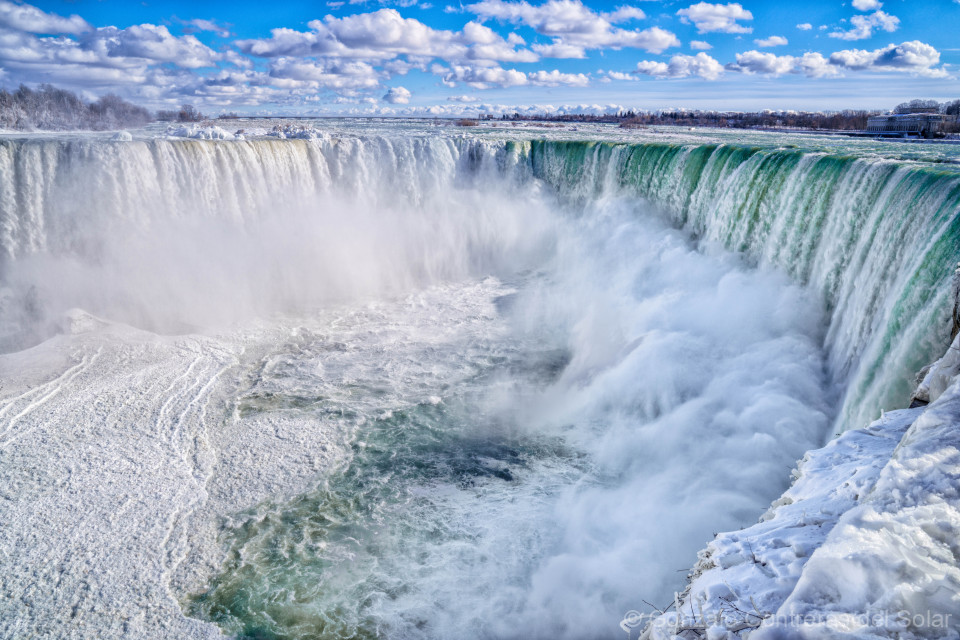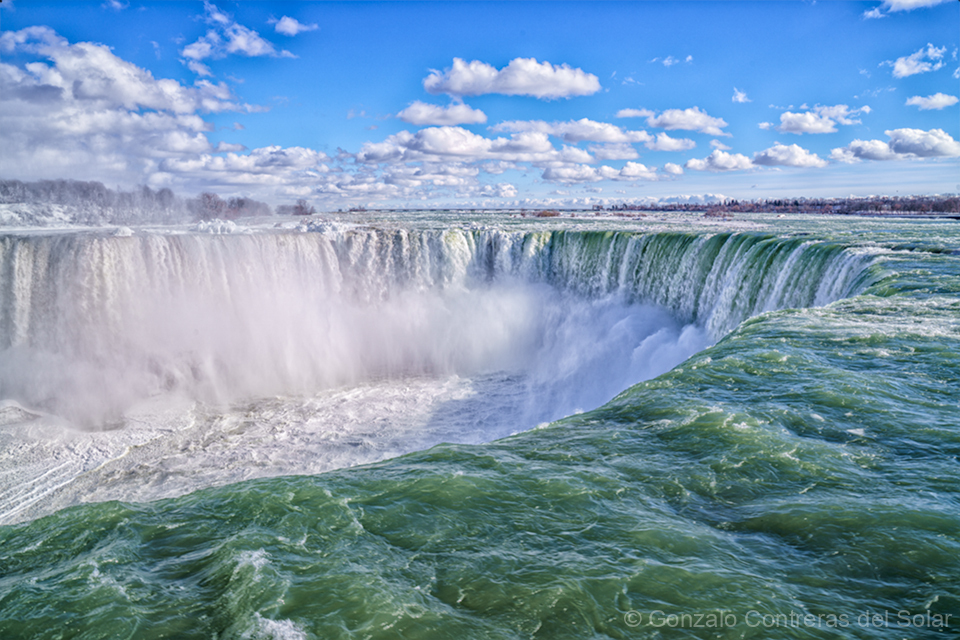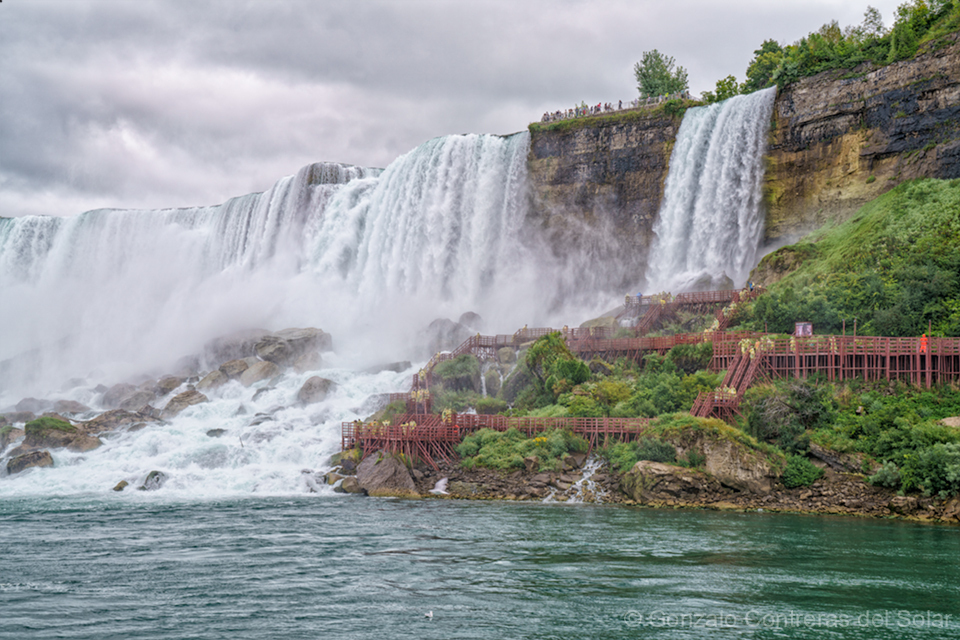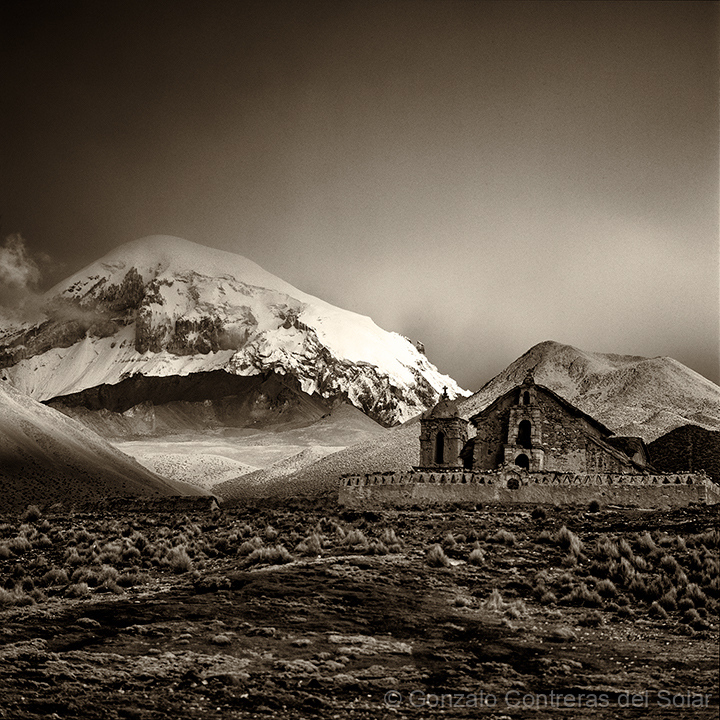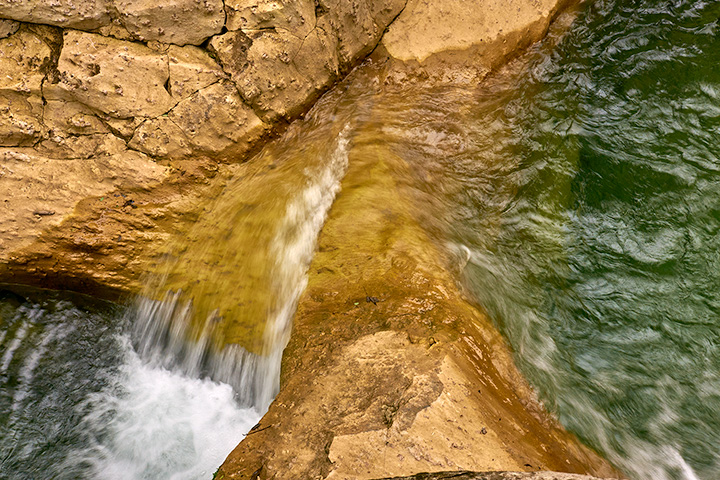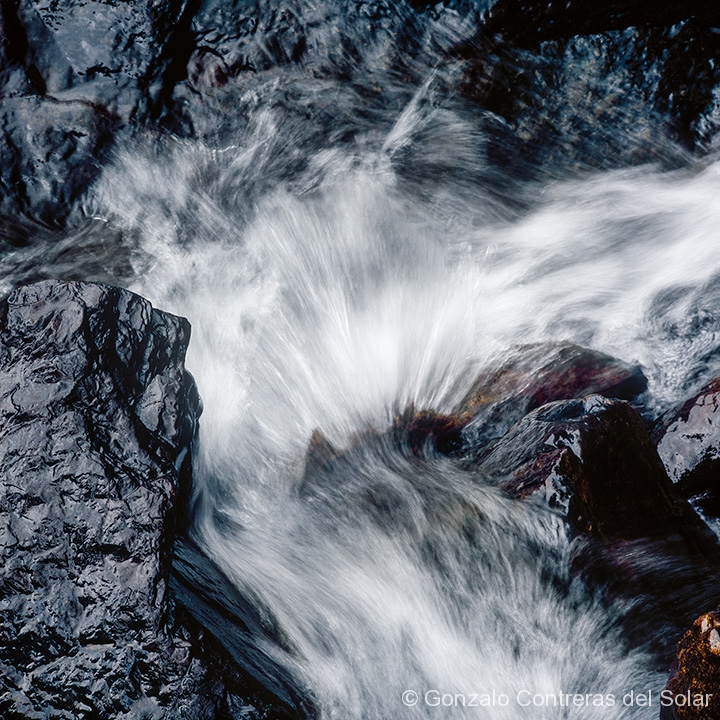Intro
Niagara Falls is one of those places where water never repeats itself. From rain-soaked mornings to frozen winter days, every moment reveals a new face of this powerful river. During two visits — one in September and another in January — I captured how light, weather, and season transform this iconic landscape.
A Meeting of Water and Time
Niagara Falls was born more than 12,000 years ago, when the glaciers receded at the end of the Ice Age. The meltwater carved a channel from Lake Erie to Lake Ontario, shaping the dramatic horseshoe that today marks the Canadian side.
Even now, millions of cubic feet of water plunge every minute, feeding a roar that can be felt before it is heard.
September: Mist, Wind, and Motion
My first visit, on a rainy September day, revealed the falls wrapped in mist. The grey light softened the cliffs while the current pulled its endless white threads over the edge.
The observation deck offered a shifting perspective — each gust of wind reshaping the curtain of water.
January: Sculpture and Silence
Returning in January was like returning to an entirely different world. The landscape had turned to crystal. Trees shimmered with ice, spray froze midair, and the powerful roar softened into a deeper, resonant hum.
On that winter morning, a rainbow appeared above the snow-covered gorge, painting color into the cold.
A Landscape That Never Stops Moving
Niagara Falls is not just a destination — it is a living process. Water, light, temperature, and geology meet in one continuous performance.
Whether drenched in rain or wrapped in ice, the falls remind us of how nature records time: endlessly, and with infinite variation.
Explore the series at gcs.photo — fine art photography where water, memory, and time become poetic meditation.
